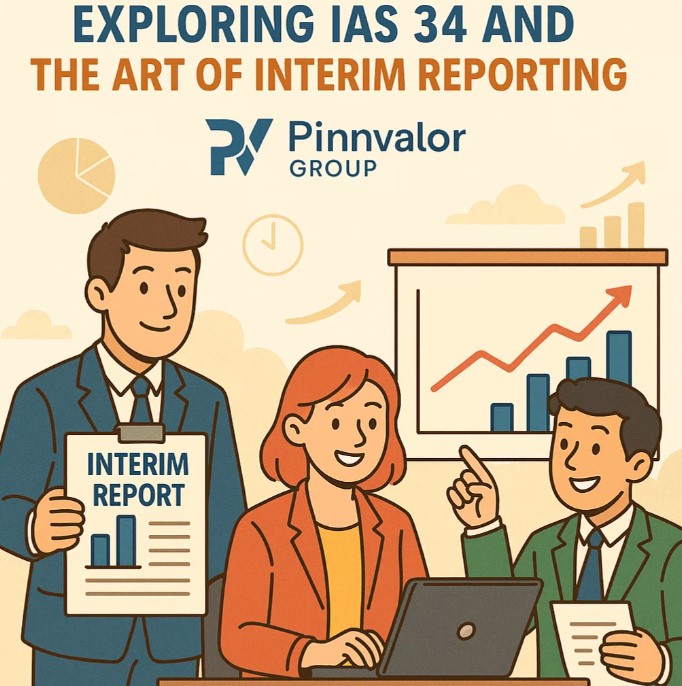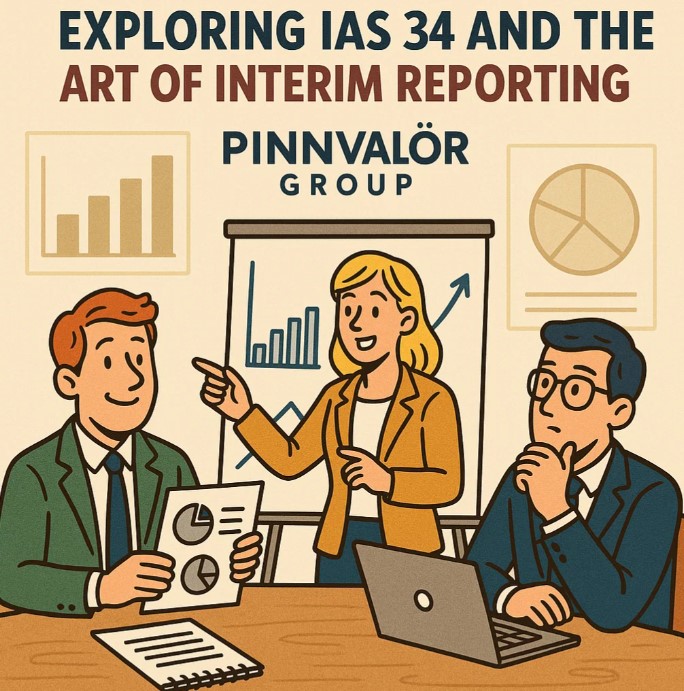
From Quarter to Quarter: Exploring IAS 34 and the Art of Interim Reporting
In a dynamic business environment, timely and transparent financial reporting is no longer a luxury — it’s a necessity. Investors, regulators, and stakeholders demand more frequent insights into an entity’s financial health, and this is where IAS 34 – Interim Financial Reporting plays a pivotal role. It bridges the gap between annual disclosures, ensuring that decision-making is based on up-to-date information.How do companies ensure financial transparency between annual reports?
Timely financial updates build lasting credibility. IAS 34 empowers companies to communicate more frequently, and more effectively.
🔍 What is IAS 34?
IAS 34 is an International Financial Reporting Standard (IFRS) issued by the International Accounting Standards Board (IASB). It lays down the minimum content and disclosure requirements for interim financial reports and guides how to measure and recognize transactions during interim periods — typically quarterly or half-yearly.
📅 Why Interim Reporting Matters
Annual reports offer a comprehensive financial picture, but they arrive too late for responsive decision-making. Interim reports offer a snapshot at shorter intervals, keeping stakeholders in the loop about:
- Financial performance and cash flows
- Emerging risks and opportunities
- Market developments and strategic actions
🧱 Components of an Interim Financial Report
IAS 34 allows for either full or condensed financial statements. At a minimum, a condensed interim report must include:
1. Condensed Statement of Financial Position
A simplified version of the balance sheet, comparing the end of the current interim period with the most recent year-end.
2. Condensed Statement of Profit or Loss and Other Comprehensive Income
Details results for the interim period and cumulatively for the year-to-date.
3. Condensed Statement of Changes in Equity
Captures movements in equity components during the interim period.
4. Condensed Statement of Cash Flows
Reports cash inflows and outflows for the interim period, highlighting liquidity changes.
5. Selected Explanatory Notes
Covers:
- Significant events since the last annual report
- Seasonality or cyclicality effects
- Unusual items impacting results
- Changes in estimates or accounting policies

⚖️ Recognition & Measurement Principles
IAS 34 emphasizes consistency:
- Use the same accounting policies as the most recent annual report.
- Revenue and expenses are recognized on a year-to-date basis.
- Entities are allowed (and expected) to make greater use of estimates due to the shorter reporting time frame.
🌐 Applicability and Scope
IAS 34 does not mandate interim reporting. However, it becomes applicable when entities are required or choose to publish interim financials. Regulators or stock exchanges often set the frequency and deadlines.
🔁 IAS 34 vs Ind AS 34
While Ind AS 34, the Indian equivalent, is largely aligned with IAS 34, the differences often lie in:
- Regulatory references
- Presentation format
- Compliance with Indian laws such as the Companies Act, 2013
However, the core measurement principles remain the same.
📌 Practical Considerations for Preparers
- Ensure timely data collection and financial close processes.
- Engage with internal stakeholders early to identify key disclosures.
- Prepare for auditor reviews, which, though not always mandatory, enhance credibility.
- Communicate clearly with analysts and investors regarding trends and estimates.
💬 Conclusion: The Art of Timely Disclosure
IAS 34 transforms financial reporting from an annual formality into a strategic communication tool. It empowers stakeholders with real-time visibility into financial dynamics — a necessity in today’s fast-moving corporate world. By embracing interim reporting under IAS 34, companies enhance not only transparency but also trust.
